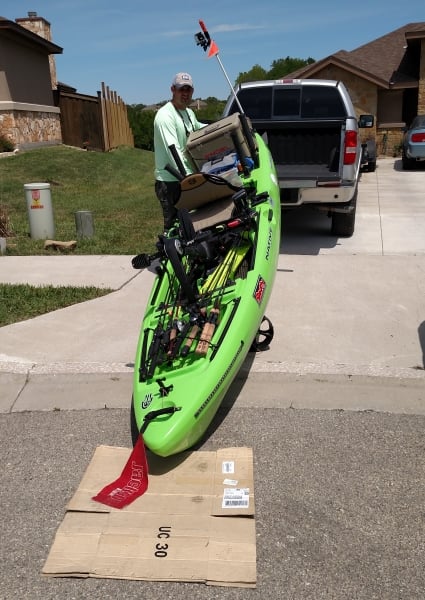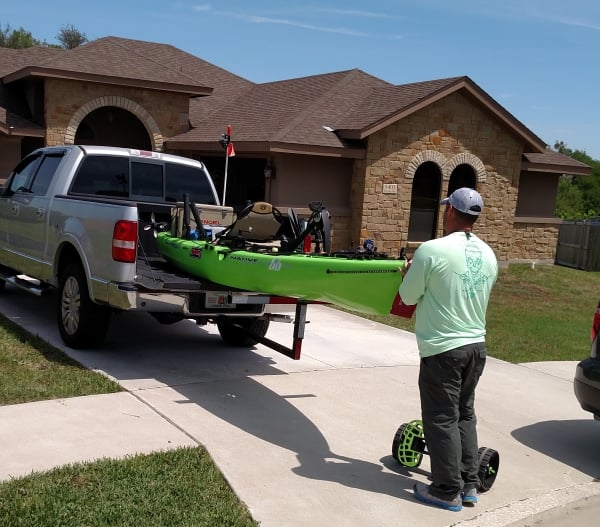Pros: Cheap, Little to no modification to your vehicle as long as you have a trailer hitch already installed, ease of loading/unloading.
Cons: Additional Risk of someone rear ending you
Let’s talk about how to transport your kayak safely when using one. First things first - get a long-load safety flag of some kind. This does not have to be anything fancy. Jackson Kayak gives you one when you purchase one of their boats, and I still use mine. I tie mine off to the front handle of my Native Watercraft “Slayer Propel 13” to give people behind me a little more warning. [Note: In most states, a warning flag is required when any object extends a certain distance past the rear of your vehicle, and/or at a certain angle. Make sure to check and comply with state laws where you travel. IR]
Next, put some reflective tape on your bed extender. I am routinely on the road well before sunrise, and as with the long load flag I am trying to get others’ attention as much as possible.

Get some quality straps and use at least three for securing your boat. My setup is simple when I cinch down my boat: One strap on the front handle, putting pressure towards the front of my vehicle; another strap on the rear handle applying pressure to the rear; and one more strap across the middle. I say use three, because if one fails the other two will be able to handle the load and keep the boat from moving back and forth, or - God forbid- being launched onto the pavement.
Here is my step-by-step guide how I use my bed extender to load my kayak: Line your boat up centered with the middle of the bed extender. You can load bow or stern first. I load stern first due to the exposed rudder of the Slayer Propel 13.

Undo your strap on your cart (if you use one) and lift the kayak onto the bed extender. Do not try to get the boat fully into the bed at this point.

(Tip: I use an old cardboard box under the bow of my boat when I do this step. This lessens the wear and tear on the boat when you slide it on rough pavement or gravel.) Go to the opposite end of the boat. Using the bed extender as a pivot point, lift with your legs and push the boat fully into the bed.


Now that the boat is fully in the truck bed, begin strapping your kayak down using the three straps as mentioned above. Here are pics of how I strap my kayak down.


I hope this helps anyone looking to use a bed extender. This is a cheap and effective way to transport your kayak if you already own a truck.

























